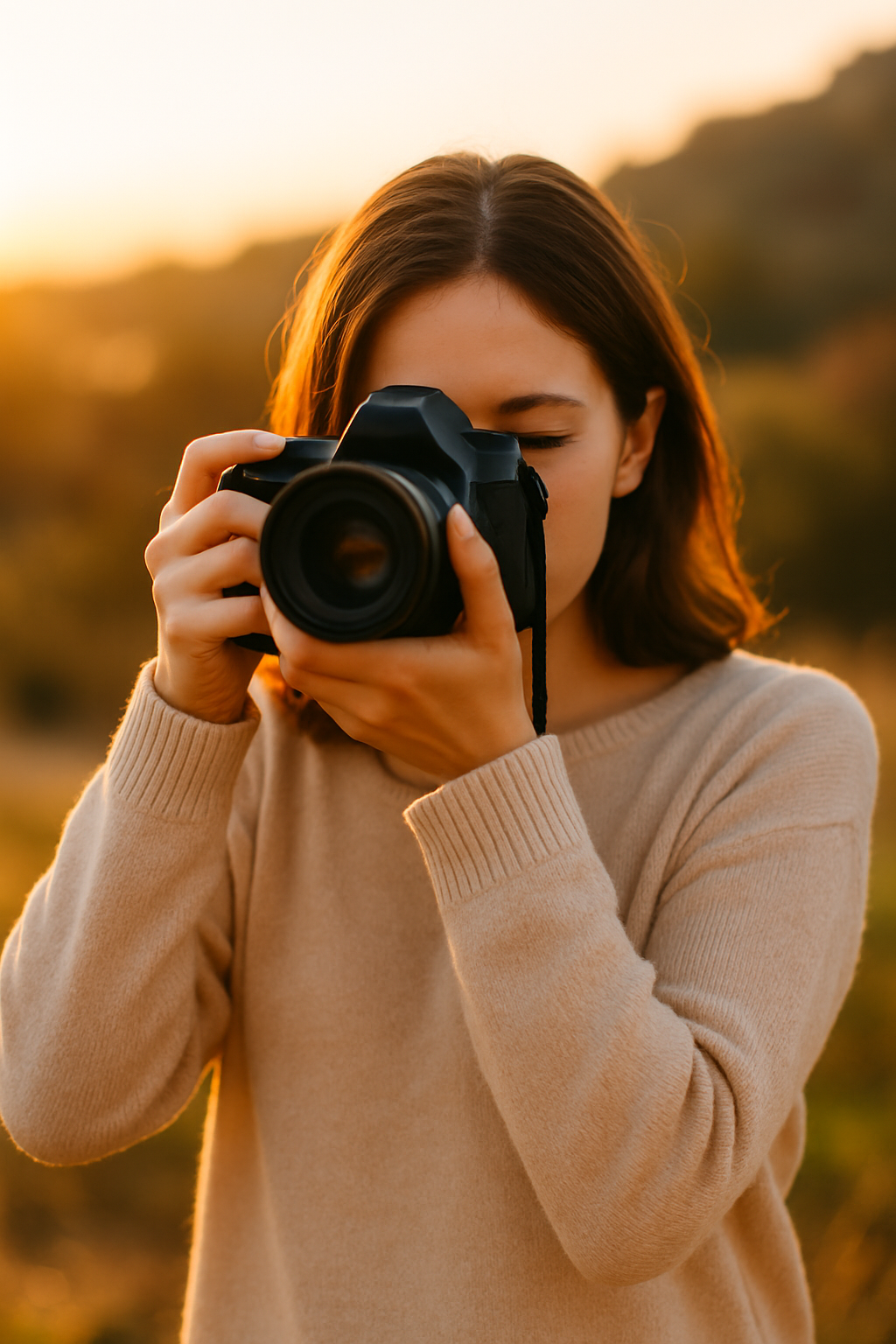One of the most common myths in photography is that you need expensive gear to take amazing photos. But the truth is: your creativity, knowledge, and eye matter far more than your camera model.
Whether you’re using a smartphone, an old DSLR, or a basic mirrorless camera, you can dramatically improve your photos by learning how to use what you already have—intentionally and creatively.
Understand Your Camera’s Capabilities
Before focusing on upgrades, take time to explore your current gear.
Read the manual (yes, really)—you’ll learn hidden features and shortcuts
Experiment with different shooting modes: Auto, Aperture Priority, Shutter Priority, and Manual
Learn how to adjust ISO, shutter speed, and aperture—even on a phone with manual controls
Most people use only 20% of what their camera can actually do. Mastering the remaining 80% will elevate your photography without costing a thing.
Focus on Lighting First
Lighting is the single most important factor in photography, regardless of gear.
Use natural window light for portraits and indoor shots
Shoot during golden hour for soft, warm light
Avoid harsh midday sun unless you’re using it creatively for shadows or silhouettes
If light is low, stabilize your camera using a tripod or flat surface instead of raising ISO too much
Great lighting transforms even the most basic camera into a storytelling tool.
Master Composition Techniques
Better framing = better photos. Composition is a skill that applies to all photography, no matter the equipment.
Practice these techniques:
Rule of Thirds: Place your subject along the imaginary lines dividing your frame
Leading Lines: Use paths, fences, or shadows to guide the viewer’s eye
Symmetry and Patterns: Capture balance or visual repetition
Framing: Use windows, doors, or trees to frame your subject
Negative Space: Allow “empty” areas to enhance your subject’s presence
By focusing on how you position your subject, you’ll create stronger and more engaging images—without changing gear.
Use What You Have Creatively
Sometimes limitations push us to be more creative.
Don’t have a zoom lens? Move your feet and get closer
No wide-angle lens? Create panoramas by stitching photos in editing
Limited to one lens? Use it to master different perspectives and compositions
Got a smartphone? Use gridlines, manual mode apps, and editing tools to refine your shots
Embrace your current setup—it can make you a more thoughtful and inventive photographer.
Control Focus and Exposure Manually
Learning how to set your focus and exposure intentionally gives you control over the final image.
On cameras: Use manual focus or single-point autofocus
On phones: Tap to focus, and slide to adjust exposure manually
Use exposure compensation (+/- button) to correct over- or underexposed shots in auto modes
By taking charge of these settings, you’ll avoid blurry subjects and poorly lit images.
Practice in Different Conditions
To grow your skills, shoot in varied environments:
Low light or nighttime
Rainy or overcast days
Indoors with limited space
Busy city streets
Backlit scenes with strong contrast
These challenges help you understand your camera’s limits—and how to work around them.
Learn to Edit Thoughtfully
Editing can take a good photo and make it great. And the best part? You don’t need expensive software to get started.
Try:
Lightroom Mobile or Desktop
Snapseed (mobile)
Darktable (desktop, free alternative to Lightroom)
Basic edits like cropping, exposure, white balance, and contrast can dramatically improve your photos. Just remember—edit to enhance, not to hide mistakes.
Use a Tripod or Stabilization Tools
A simple tripod or even a table can eliminate camera shake and improve sharpness.
Perfect for:
Low light shots
Long exposures (light trails, waterfalls)
Self-portraits or videos
If you don’t have a tripod, improvise. Rest your camera on a book, shelf, or steady surface.
Study the Work of Great Photographers
Look at photographers who inspire you. Study how they use light, composition, and emotion in their work.
Ask yourself:
Where is the light coming from?
What’s the main subject?
How is the scene composed?
Try recreating their style with your own twist. This helps train your eye and sparks new creative ideas.
Focus on Storytelling
A compelling photo tells a story—even without words. Think about the mood, message, and emotion behind your shots.
Ask:
What do I want the viewer to feel?
What details can I include or remove to strengthen the image?
Can I capture a moment instead of just a subject?
When you shoot with intention, even a basic camera becomes a storytelling machine.
The Best Camera Is the One You Know How to Use
You already have the most important tools for better photography: your vision, curiosity, and commitment to learning.
So instead of waiting to upgrade gear, upgrade your technique. Master light, composition, and storytelling—and you’ll create powerful images with whatever camera is in your hands.
